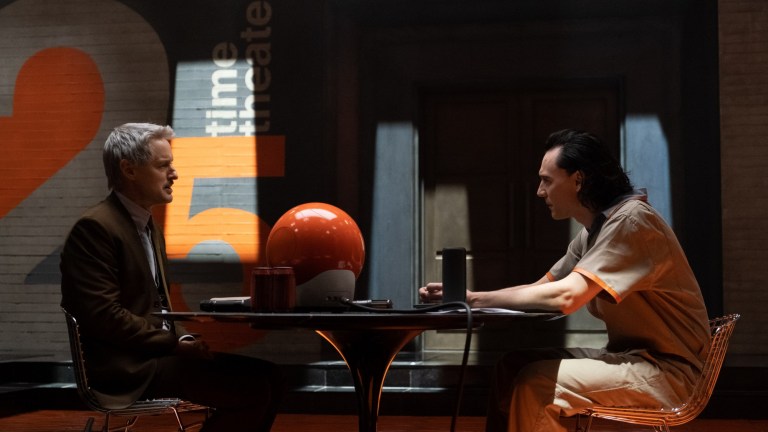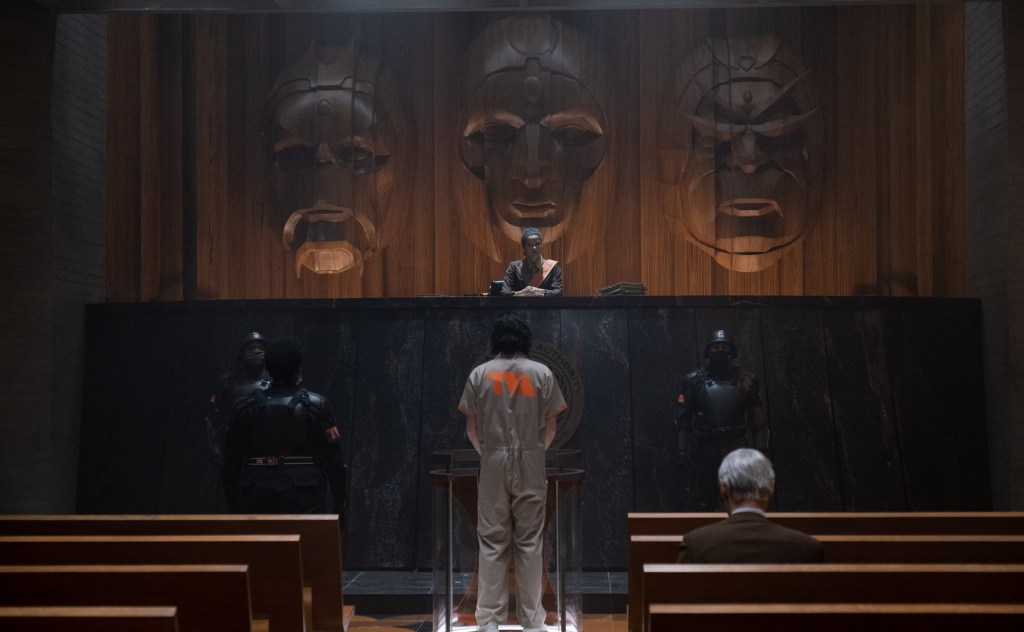The Sci-Fi Classics That Inspired The Look Of Loki
Loki director Kate Herron tells us which genre milestones provided a roadmap for the show’s design.

One of the first things that a viewer notices about the new Marvel show Loki — besides the irreverent, surreal tone and typically fantastic performance by Tom Hiddleston in the title role — is the look, which blends futuristic high tech with bureaucratic blandness and out-of-time anachronisms.
All these elements are particularly present in the headquarters of the Time Variance Authority, the organization that keeps the Sacred Timeline from splintering off into pieces and sends agents out to retrieve Loki once he fractures the timeline with his escape from 2012 in Avengers: Endgame.
It’s the kind of strange mix of science fiction, fantasy and enhanced reality that has been practiced in the past by filmmaking geniuses like Terry Gilliam and others. Director Kate Herron, who helms all six episodes of Loki, tells us that she was going for exactly that kind of feeling.
“I really wanted it to be a big love letter to sci-fi,” Herron explains to Den of Geek. “So I was pulling from so many places like Metropolis, Brazil, Blade Runner, the book Hitchhiker’s Guide to the Galaxy. I think for me it was just such a big challenge and exciting to set up this new corner of the MCU with the TVA.”
Herron continues, “I grew up near a lot of Brutalist architecture. A Clockwork Orange was filmed basically down the road from where I lived. I loved the idea of kind of bringing that but marrying it up with this kind of Midwest architecture, you know, the Mad Men style. The TVA are heroic but I liked the Brutalists because they had these amazing godlike timekeepers overseeing everything. So it felt like a kind of nice marriage of different styles in that way.”
For Herron and the production team, the biggest test in creating the Time Variance Authority and its environs was building a place that felt both real and otherworldly at the same, uh, time. But even that was given a different spin by another set of influences entirely.

“I think the big challenge really was that the TVA exists outside of space and time,” she explains. “So it’s this interesting thing, it almost has this Vegas-like quality. All the light is very artificial there. Because there’s a mystery in our story, I was also inspired a lot by film noir and detective stories. Seven was definitely an influence. I even have a needle drop reference to Seven in the second episode.”
The director wanted audiences to feel like they were in a real, tangible place, even if the place itself was beyond the comprehension of human understanding or awareness.
“For me, the fun of it was trying to create a real living, breathing place,” Herron says. “So a lot of our sets, for example, were inspired by films like Scott Pilgrim and Eternal Sunshine of the Spotless Mind where they had these amazing practical sets where the actors can walk off one and step onto another.
“You can see that in our first episode with Loki and Mobius in the elevator,” Herron adds. “As they step out and go into the TVA, we follow them down the hallway in this one take and into the time theater. That, for me, was very important in helping it feel like a real living, breathing environment.”
Although Loki will almost certainly take its title character into different eras and different locales — both on Earth and in space — we suspect that the Time Variance Authority and its wonderfully retro-futuristic offices will serve as an anchor of sorts as the series moves forward along the Sacred Timeline.
Loki is streaming on Disney+, with new episodes premiering on Wednesdays.
